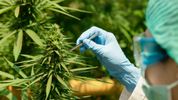New York State recently announced its "New York Forward" plan through which it will reopen. Once again, Colligan Law has summarized the information that has been made available so far.
When will the reopening occur?
There generally is no set date for the reopening, and as Governor Cuomo has stressed, the reopening will happen regionally and will be "data-driven." Specifically, NYS will follow four criteria in determining whether a region can reopen: (1) the region's infection rate is sufficiently low; (2) the region's healthcare system is not so overwhelmed that it cannot adequately handle a potential resurgence; (3) the region's testing capacity can properly detect and isolate new cases; and (4) sufficient contact-tracing is in place in the region to help prevent another spread.
While most regions do not have dates set for reopening, New York State has announced that the Finger Lakes, Southern Tier, and Mohawk Valley regions can begin Phase 1 (described below) of reopening on May 15, so long as their positive trends of the criteria discussed below continues.
Infection Rate
The State will look at whether there are declines in a region's: (1) total hospitalizations over a 14-day period; (2) hospital deaths over a 14-day period; and (3) new hospitalizations.
Healthcare System Capacity
The State will determine whether there is sufficient hospital bed capacity and intensive care unit (ICU) bed capacity. Specifically, a region must have at least 30% of its total hospital beds available as well as at least 30% of its total ICU beds available before it can reopen.
Testing
New York State has announced that it tests at a rate higher than that of any other state or country, and reopenings will depend on the continuance of this high testing rate. In order to re-open, a region must have 30 tests per 1,000 people per month.
Contact Tracing
The New York State Department of Health (DOH), Michael Bloomberg, Johns Hopkins University, and Vital Strategies have partnered to develop an efficient contact tracing system in New York State. Each region will have specific criteria, based on its characteristics, for this system. The general plan, however, will be for labs to report any positive COVID-19 cases to contact tracers each day. Then, the contact tracers will interview the patients from those cases to identify any people with whom they may have been in contact over the past 14 days. Those contacts will be notified of their possible contact to the virus and will be advised to quarantine for 14 days. Then, the contact tracer will stay in touch with those contacts via text throughout the next 14 days to monitor any developing symptoms of the virus.
How will the reopening happen?
As mentioned, New York State's reopening will happen by region. Each region will reopen in phases. This phase-in plan, according to information provided by the State, will begin with businesses with the greatest economic impact and with low risks of infection for employees and customers. It then will move onto businesses with lower economic impact and higher risks of infection. Phase 1, for example, will consist of construction, manufacturing, wholesale trade, select retail (for curbside pickup only), agriculture, forestry, and fishing businesses. Phase 2 will consist of professional service, finance, insurance, retail, administrative support, real estate, rental, and leasing businesses. Phase 3 will consist of restaurants and food services, and Phase 4 will consist of arts, entertainment, recreation, and education.
Once these businesses are reopened, the State has warned, they will not be returning to their pre-COVID ways. Rather, measures will be taken to prevent the spread of infection. For example, businesses may have to adjust their hours, follow social distancing guidance, mandate masks for employees and customers, enforce strict cleaning procedures, or screen employees and report confirmed cases to customers.
What can I do to assist in the State's reopening?
There are the procedures that everyone has heard and that should continue: wash your hands with warm water and soap for at least 20 seconds; use hand sanitizer; frequently disinfect regularly touched surfaces; stand 6 feet apart from one another; check on your loved ones; and stay home unless you are going to work as an essential employee, shopping for essential items, or checking on a loved one.
But if you are a business owner and plan to re-open when it is your turn, there are things you can be doing now to prepare. For example, you can plan how you will implement social distancing at your business. You can think about whether you will provide masks and hand sanitizer, and if so, you can place orders ahead of time. You can decide what hours will be best for your business to be open, and whether your business needs to have the same or similar hours it previously did. You can begin thinking about how you might implement employee screening while maintaining employee privacy. And you can reach out to your employees, if any, to fill them in and ask for ideas.
While now may not be the time to reopen your business, there is no reason it can't be the time to prepare to the extent possible.
Our plan to reopen the state, “New York Forward,” focuses first and foremost on getting people back to work and easing social isolation, without triggering renewed spread of the virus or overwhelming the hospital system.
https://www.governor.ny.gov/sites/governor.ny.gov/files/atoms/files/NYForwardReopeningGuide.pdf
 unknownx500
unknownx500










